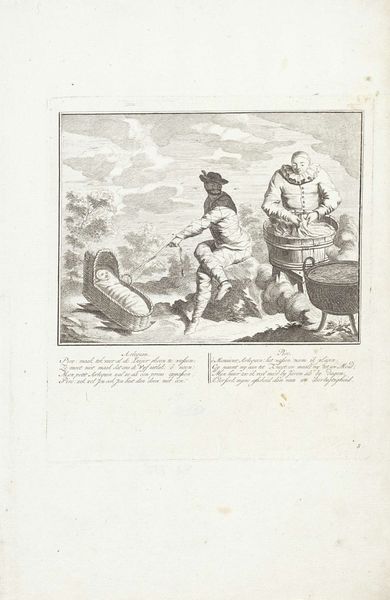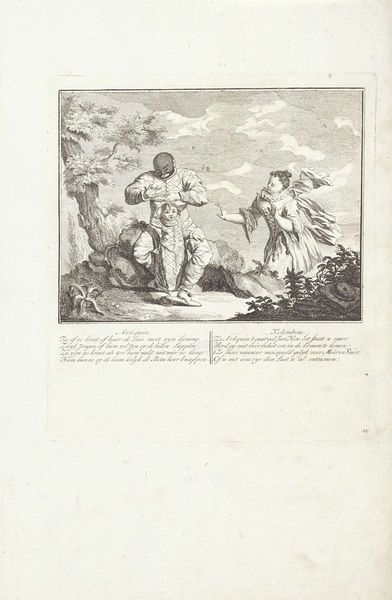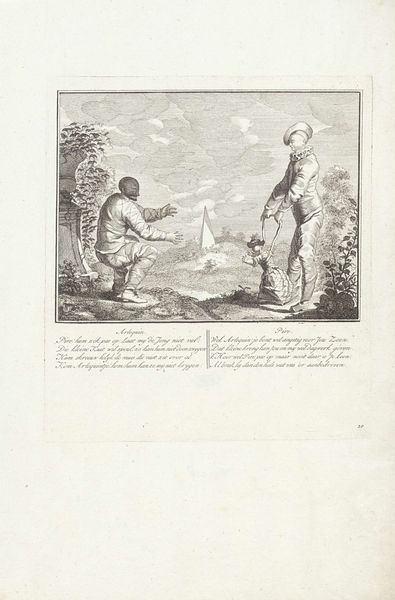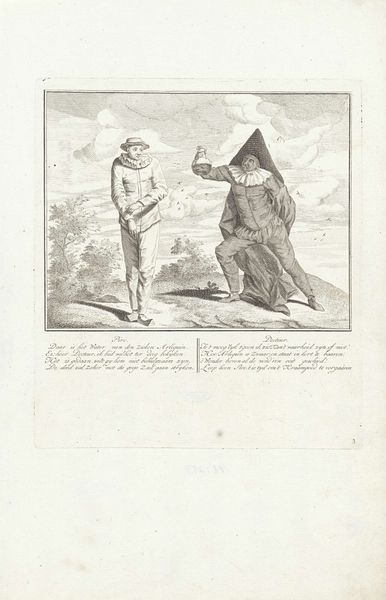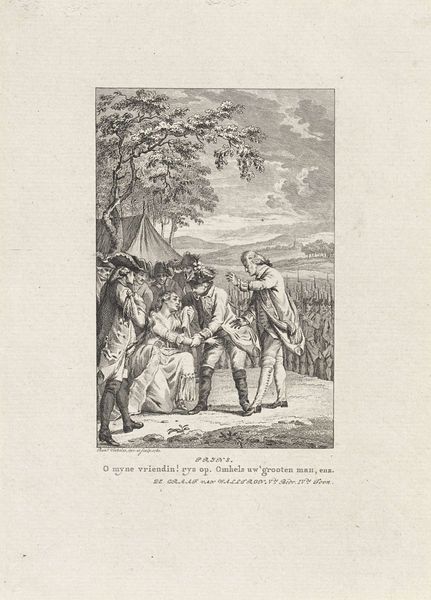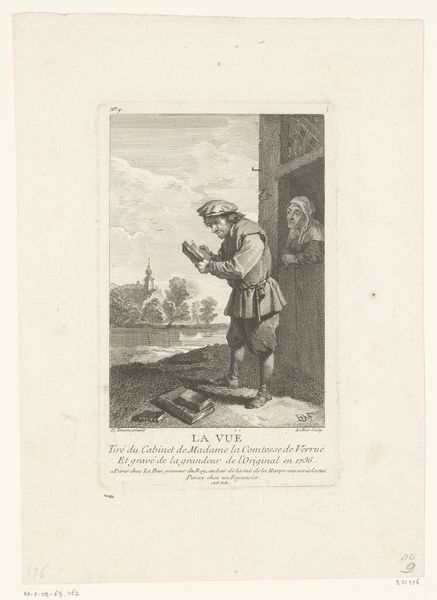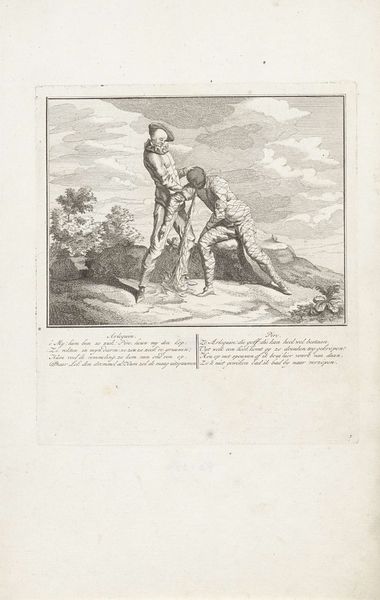
print, engraving
#
narrative-art
#
baroque
# print
#
caricature
#
figuration
#
genre-painting
#
engraving
Dimensions: height 232 mm, width 198 mm
Copyright: Rijks Museum: Open Domain
Editor: This engraving, "Kleine Arlequin wordt verschoond," which translates to "Small Harlequin Being Changed," is dated to between 1720 and 1728. It presents a rather…unflattering scene. There’s a sense of awkwardness and even a bit of discomfort emanating from the image. What do you see in this piece, considering its historical context? Curator: Well, immediately, I’m struck by the caricature, the overt visual commentary, the lack of idealization which diverges from established approaches, and this being Baroque artwork means looking closer at the sociopolitical landscape shaping its reception. Consider the figure on the right; does the clothing and pose signify a commentary on class or perhaps even a dig at a particular figure in society? The almost theatrical draping of the cloak suggests performativity too, perhaps of morality itself. Editor: That's interesting. It's like the artist is using the Harlequin figure to satirize certain societal behaviors or figures, stripping them down, quite literally in the case of the baby! So, the artist is creating an argument of the social norms. Is that a fair understanding? Curator: Exactly! This challenges traditional Baroque art's patronage. Where was something like this displayed? Was it for public consumption, or more of a private critique circulating within a specific circle? Its impact lies not just in the image itself, but in the conversation it sparked, wouldn’t you agree? Editor: Definitely, thinking about who would have seen this and how they would have reacted really shifts my perspective. I appreciate that perspective. Curator: And seeing the piece this way offers such insight on how art was actually interacting with culture during that time.
Comments
No comments
Be the first to comment and join the conversation on the ultimate creative platform.
